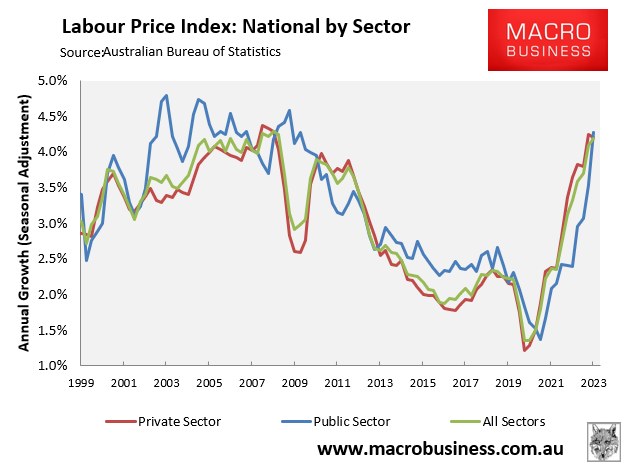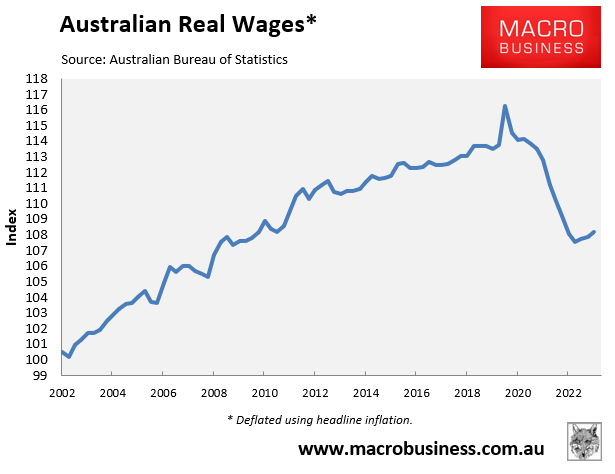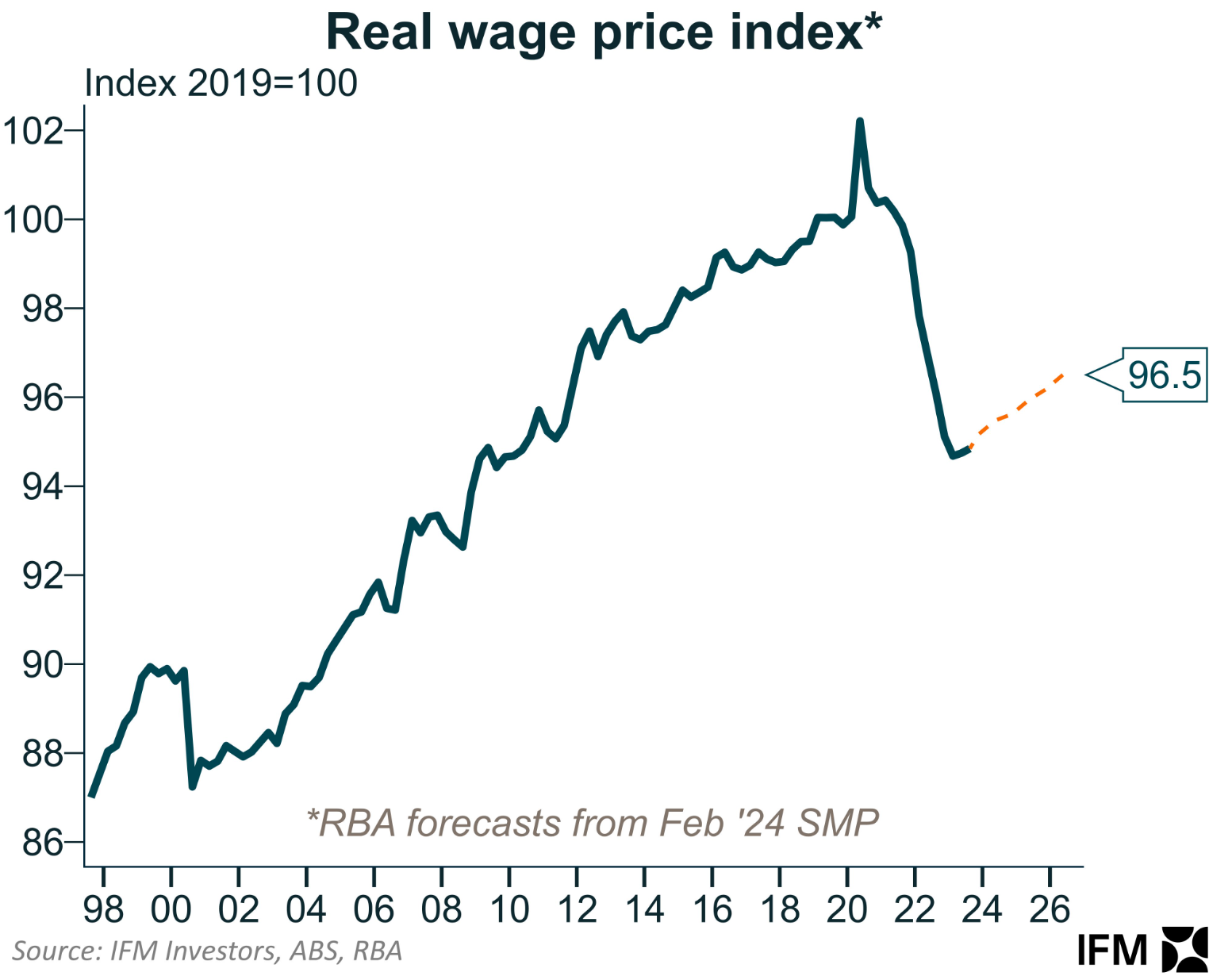The Australian Bureau of Statistics (ABS) released the wage price index for the December quarter, with nominal wages rising by 0.9% over the quarter (in line with economists’ expectations) to be 4.2% higher year-on-year:

Annual nominal real wage growth is now running at its highest level since March 2009.
The ABS noted that wage growth was positively impacted by last year’s minimum and award wage increases:
“Jobs covered by enterprise agreements contributed almost half of quarterly growth in December quarter 2023”.
“The larger than usual December quarter contribution from jobs covered by this method of setting pay was driven by the implementation of newly negotiated enterprise agreements across both sectors”.
“Additionally, enterprise agreements linked to outcomes from state public sector wage negotiations, the 2022-2023 Fair Wage Commission annual wage review rise, the Aged Care Work Value case decision or the Consumer Price Index (CPI), contributed to higher hourly wage changes than were seen in December quarter 2022”.
“Centralised wage and salary reviews featured more heavily this quarter as ad hoc increases to jobs covered by individual arrangements (which are generally more sensitive to labour market demand) lessened”.
Real wages continue to rebound slowly when measured against headline inflation:

Real wages are now 6.9% below their June 2020 peak and tracking at September 2010 levels.
Worse, employee cost of living soared 6.9% in the 2023 calendar year, according to the ABS, meaning working households are still suffering from falling real incomes:

According to RBA projections, Australian real wages will still be below 2019 levels in 2026:

Thus, it will be a long road back to rising living standards.

